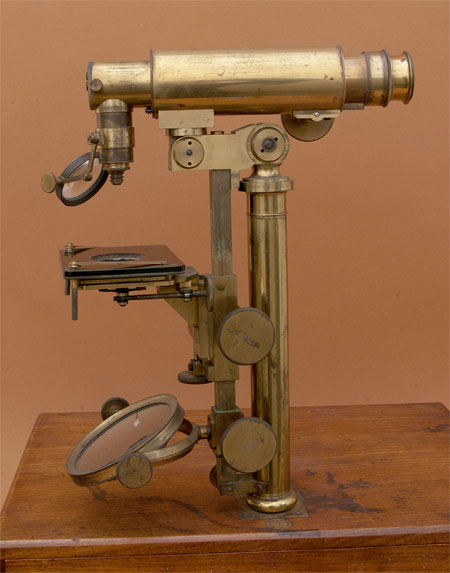Results of Golub Collection search: Microscope No. 167
Charles Chevalier Universal Microscope (No. 167)
Made: c1840
Made by: Charles Chevalier
Made in: France
Charles Chevalier (1804-1859), an optician in Paris, was one of the first to use multiple lenses screwed together to achieve higher magnifying power, but chromatic aberration, which had plagued the users of microscopes since their beginnings, was still a problem with the lens combination. In 1830 Chevalier, with the help of another French microscope maker, M. Selligue, started to make horizontal microscopes, after a design shown to him in 1827 by Giovanni Amici, an Italian instrument maker. Charles Chevalier first worked in partnership with his father Vincent, eventually inheriting the shop and becoming well known for the construction of horizontal microscopes. They did not fully solve the problem of chromatic aberration.
This microscope can be configured either as a horizontal or upright microscope. Magnification was achieved by a combination of multiple objective lens elements, and by changing the length of the microscope body (large knob near the eyepiece). The instrument has both coarse and fine focus, a double surface reflector mirror, plano-convex lens for epi-illumination (x), an accessory camera lucida attachment (for drawings), and a mechanical stage for X- and Y- movement of the sample. The microscope is mounted on a mahogany case. Inside is storage space for the microscope and an accessory drawer with additional components. This microscope is stamped "27", which is probably the serial number. The microscope body is engraved Microscope Achromatique Universel de Charles Chevalier Ingenieus Opticien Breveté Palais Royal 163 a Paris.
Microscope featured 8/04; 4/13; 07/19

